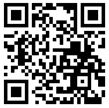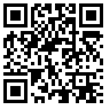Radio Frequency ldentification is already changing the way things can be identified and tracked.It’s also allowing objects to communicate with each other. And this is just the start.
• At Virtueholder we believe that RFID stands today at the dawn of a new era of smart products ,with integrated intelligence,wireless connectivity,monitoring and control.Along with other laeding scientists and technologists we see a future of amazing potential and ,as yet,unimagined applications and innovationsa···
• The future of RFID is wide open ,and things are about to get very interesting. The RFID timeline Space exploration,computing,radar,plastic surgery,jet propulsion····As with many transformational technologies which ultimately benefit humanity,RFID can trace its origins back to a time of conflict-the Second World War.
• 1935-45
British scientists developed a transponder-based system,using radio to distinguish between friendly and enemy aircraft.
• 1950-60s
Scientists in the US ,Europe and Japan continued research and presented papers explaining RFID’s potential in remote object identification.
• 1971
Mario Cardullo demonstrated a transponder with 16-bt memory for use as a toll device to the New York Port Authority.
• 1973
Steven Depp,Alfred Koelle and Robert Frayman demonstrated modulated backscater (a core principle of moderm RFID) at the los Alamos National Laboratory.
• 1980s
RFID formed the basis of automated toll systems for roads, bridges and tunnels.
• 1980s
RFID tags used to identify cattle,and later, domestic pets.
• 1990s
IBM engineers developed and patented Ultra High Frequency RFID.
• 1999
At the newly established Auto ID Center,David Brock and Sanjay Sarma developed RFID tags to link with the internet as part of networking technology.
• 2005
AIM Standard created for embedded Tire RFID.
• 2006
Aerospace industry required RFID asset tracking on all commercial airliners.
• 2008
All new vehicles sold in the U.S required to have tire pressure monitoring systems- wireless communication method utilizing RFID tags.
• 2014
Apple introduces the iPhone 6 and sells 74 Million during 4Q15;every new iPhone has NFC (near field communication)that can be used for automatic payment and other benefits.
• 2015
10%of the word’s apparel (4B items per year) now include RFID tags for inventory control.
Radio frequency-the science bit
• AS RFID is based on sending signals via radio waves,it’s worth overviewing a little of the physics behind the concept.
ENnergy in a certain form
• Radio waves are a kind of electromagnetic energy within a specific range of wavelengths.
• The range extends from very low Frequency (VLF) at 10 to 30 kilohertz (kHz).
• All the way up to Extremely High Frequency (EHF) at 30 to 300 gigahertz(gHZ).
• In nature, radio waves are caused by lightning,stars,galaxies-humans have simply harnessed the same energy to enable communication. And like all electromagnetisc waves,radio waves travel at the speed of light.
What RFID can do
• RFID can be’ read-only’ or’ read/write’. It doesn’t need contact or a line of sight to work. RFID operates in all kinds of environmental conditions. RFID provides high levels of data integrity. It’s also very hard to counterfeit ,and ideally suited to security-sensitive applications.
Importantly, information can be written to the memory on the device many times. It is write-many,read-many(WORM).
Currently RFID is used in systems such as:
▪ Railway rolling stock identification and tracking
▪ Identifcation of freight containers
▪ Identifying and tracking assets
▪ Automated toll collection
▪ Animal identification
▪ Car immobilizers
▪ Passports
▪ Ticketing
▪ Apparel
▪ Door entry systems
▪ Managing items in retail, healthcare and logistics
▪ Smart phones for automatic payment
▪ Racing tires
|
Parameter |
Barcode |
RFID |
|
Data management |
Write Once,read many (WORM) |
Write many read many |
|
Data density |
1-100 Bytes; static |
1k - 64 Kbytes; configurable |
|
Machine readability |
Good; line of sight needed |
Good; no line of sight needed |
|
Human readability |
Limited |
Impossible |
|
Influence of optical |
High; impossible to read |
Low to non-existent |
|
Influence of materials |
No influence |
High; can cause functional |
|
Influence of position or direction |
Noticeable as a function of distance |
Limited; dependent on dipole orientation |
|
Investment and operational costs |
Low investment; multiple sourcing options |
Relatively high how and sw limited sources |
|
Reading speed |
Low; single read cycles |
High, ‘multiple read’ cycle |
|
Maximum communication |
0 - 50 cm |
0 - 500 cm |




